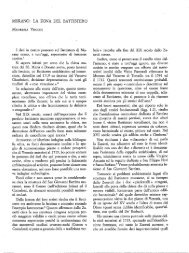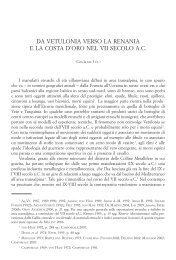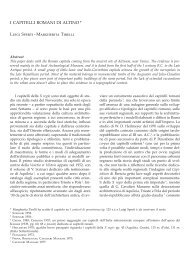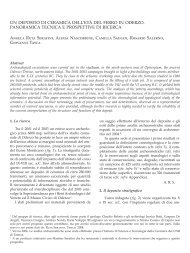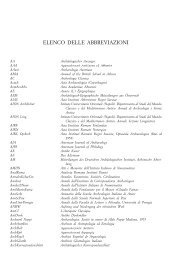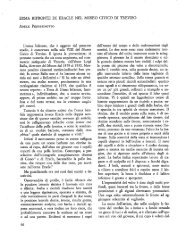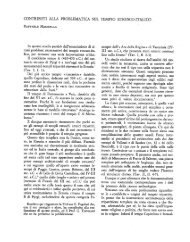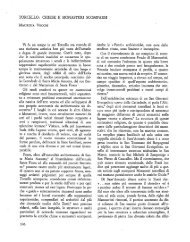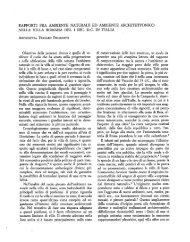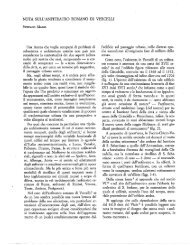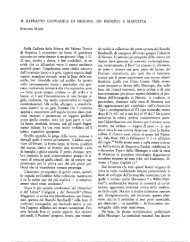RVApI,4/138. - Bretschneider Online
RVApI,4/138. - Bretschneider Online
RVApI,4/138. - Bretschneider Online
You also want an ePaper? Increase the reach of your titles
YUMPU automatically turns print PDFs into web optimized ePapers that Google loves.
lo ALEXANDER CAMBITOGLOU [RdA 5seated holding a syring and a branch and lookingtoward Aphrodite who is seated on the right holding a fan; in the middie an Eros is moving towardAphrodite holding four fillets, a phiale and a junx.(b)-Seated maenad holding thyrsus and open cistabetween young satyr holding torch and situla andyouth (or youthful Dionysos) holding thyrsus andmirror.The subject on the obverse is fairly popular inLate Apulian but I don’t know any representationsof. it in the early phase of the style and it appearsonly four times in Middle Apulian.The earliest extant representation is on the beilkrater by the Iliupersis Painter, Louvre K 3,<strong>RVApI</strong>, 8/17 in which Europa is seated in thecentre by a pool, while the buil Is approachingfrom the right. Fiere Europa appears to have justnoticed the animai and this must be the eariieststage in the development of the story.The amphorae by the Darius Painter Bari 872,<strong>RVApI</strong>I, 18/44 and Napies 3218, <strong>RVApI</strong>I,18/46, the caiyx-krater in the manner of the Darius Painter Vatican AA1 (inc. 17200), RVApii,18/113, the amphora by the Perrone Painter Vatican X7, <strong>RVApI</strong>I, 18/227 and the pelike MilanA1868 (old no St. 6874) attributed to the Painter of Zurich 2657, RVApii, 18/367, representthe second stage, in which Europa moves towardthe buil trying to touch hint These are highlyanimated compositions and some of them includea number of figures. Interesting variants of thesecond stage are represented on the Ascona situlaand on the chous associated with the CapodimontePainter Taranto 54079, RVApii, 28/35*. On theformer Europa is represented kneeling in front ofthe buil about to caress him, on the latter sheappears reaching toward him while sitting on arock-pile; on both vases the atmosphere is idyllic.The third stage of the legencl where Europa hasalready mounted and is riding the buil appears onthe fragment of the Group of Oxford G 269 Kiei,Private Collection, RVAp1, 15/24, on the fragment of the Berlin Ganymede Group Copenhagen13433, <strong>RVApI</strong>, 16/50 and on the amphora BerlinF3241, <strong>RVApI</strong>1, 18/234 which is terribly overpainted but which must belong to the circie of theDarius Painter. With these three vases goes thestemless cup by the Patera Painter Vienna 189* For a photograph of this vase I am indebted toProfessor A. D. Trendall.(S.K. 164.93) <strong>RVApI</strong>I, 23/43 which represents,in the tondo, Europa and the buil in a very mannered composition in which Europa is almostmounted and looking as if she is floating in the airwhile the buil has already started running.**The style of drawing of the Ascona situla recallsthat of the Chamay Painter on whom see <strong>RVApI</strong>,chapter 16, section 3. The idyllic atmosphere ofthe scene on the obverse of the situla is charaeteristic of the artist’s scenes and our vase is alsoconnected with his works by such features as therows of white dots indicating the various levelsof the ground and the dense double lines indicating the folds of drapery. The figure of the kneeling Europa stands very dose to the kneeling woman with the child on the hydria Berlin P3291,<strong>RVApI</strong>, 16/60. Our vase, nevertheless, differsfrom those attributed to the Chamay Painter bythe treatment of the profile heads and more especially the facial features which are here sharper(the lines of the eyebrows, for example, are notas curved as they are on vases by the painterhimseif); the reverse of our situla takes us furtheraway from the painter. I prefer therefore to piacethe Ascona vase dose to the Chamay Painterrather than attribute it to him unreservedly.About 350 B.C.20. P~xxs (round) Figs. 40Sydney, Private Coilection, on loan to the Nicholson Museum.On the lid: bearded head in profile iookingleft; in the field unidentified object.The style reminds one of the early work of theDarius Painter on whom see <strong>RVApI</strong>1, chapter 18,section 2. Cf., for example, the curly hair and laurei wreaths of the Sydney pyxis which are treatedin high relief lines with those of Apollo on theobverse of the volute-krater B.M. F 279, <strong>RVApI</strong>I,18/17. With this figure the head of our. pyxisshares another feature, the outlining of the noseand forehead by means of relief lines against theSince writing this article another vase with a representation of the third stage of the legend came tothe notice of Professor Trendali and myself, the dinos)n stand Bloomington, Indiana University An Museum80.27.2 (<strong>RVApI</strong>I, Additions to Vase-lists 18/233a,where it is placed dose to the Perrone Painter, butconsidered also to be a possible work by the DariusPainter himself) on which Europa appears on the buliescorted by women riding sea creatures.



